I followed the nayika around Bhoramdeo Temple.
‘Nayika’ literally means ‘heroine.’ Traditionally she is heartrendingly beautiful, epitomises female grace and sensuality. In sculptural art she is marked by alluring embonpoint – full bosom and rounded thighs. She is also heavily ornamented – sports large earrings, thick necklaces and anklets – adding to her seductiveness. Nobody fires up the imagination of the traveller or the sculptor like a nayika. At Bhoramdeo she is everywhere. I saw her on the niches and nooks of the temple wall alright. Everybody does. Then I also saw her walking and talking. Laughing and eating. She’d just stepped down the cranny, her home for over a millennium. Bored of the company or tired of being alone? She ignored me. I followed her bewitched.
She sat down away from the weekend crowd spilling out of buses and jeeps and peered at the temple through sari-veiled eyes. Soft morning rays of the winter sun dappled their way over the sal and bija leaves before setting the temple aglow with a gold lustre. A living temple nestled in the foothills of the Maikal Hills, the Bhoramdeo stood by a ‘sarovar’ or holy pond. It faces east like a Hindu temple is supposed to and has ‘pravesh dwaras’ or entrances on the eastern, southern and northern sides. From where we sat, I saw the English guy I had dinner with last evening. He seemed to be hungover still; dainty panama pulled over dark shades and muttering under his breath. I was not any better. He walked barefoot over the raised square ‘adhisthana’ or platform which held the ‘mandapa’ (assembly hall) and the ‘grabhagriha’ (the sanctum sanctorum). The whole structure stood at about 30 metres – imposing even from the distance. The grandeur beckoned her; she stood up and walked towards the temple looking at it with all the fondness of someone returning home after a long absence.
I chased her gaze.
The ‘jangha’ (portion of the wall extending from the base of the ‘shikhara’ or spire to the top of the ‘adhisthana’) is arresting with its four rows of sculptures and ornate foliage patterns. The topmost row comprises of a series of ‘bharavahakas’ (weight bearers) who are depicted as ‘vamanas’ (dwarves) who bear the shikhara over their heads. The carving is so finely detailed that one can see the consequences of the load: their eyes are bulging, backs arched and faces flushed with breathlessness. The second row has warriors in combat with others or animals or standing by themselves. The fourth row depicts worshippers playing musical instruments. The jangha is further embellished by three vertical niches enshrining Ganesha, Hanuman and Shiva. Unlike the rest of the temple, these were sculpted independently either of granite or schist stone and placed in the niches. What happened to the ones that were originally there?
I asked my nayika.
She turned to me and smiled. She belonged to the Gond tribe; Bhoramdeo was always under the constant care and vigil of the Gonds and Baigas, tribal folks who lived in and off the forest. The temple derives its name from King Bhoramdeo a Gond king. A medieval structure from the 7th – 11th centuries AD, historians however say there is no evidence of such a Gond king during the period. Alexander Cunningham, the first Director General of the Archaeological Survey of India visited Bhoramdeo during the 1880s and based on the inscriptions he found in the temple said that it was built by a certain Lakshana Deva Raya. He also found the name of a Nagavanshi king Gopaladeva (11th century AD) from which he deduced that the temple was built by Lakshana Deva Raya, probably a religious head and dedicated to the king Gopaladeva.
According to Cunningham, the temple was originally dedicated to Vishnu – a view seconded by many noted historians and archaeologists. He suggested that when the Gonds came to power in the region, the image of Vishnu may have been replaced by the Shivalinga one finds inside the temple today. In local dialect ‘Bhoramdeo’ stands for Lord Shiva. However the Shivalinga in the garbhagriha, experts point out, is too small to have been part of the original temple. In other words, it is not comparable to the grandeur all around it.
My nayika wasn’t interested in the archaeological or historical confabulations.
She began to imitate the gestures of the other nayikas – those on the temple wall. She adjusted her ornaments, wringed her hair like she’d just come out of a shower and admired herself in an imagined mirror. She walked her ghungroo faintly plangent against the tessellated adhisthana. She lingered on the lovemaking couple; in the throes of passion the woman was clutching the legs of the man. His legs went around that of the woman; some has said the erotic panels of Bhoramdeo were the Kamasutra illustrated. Lessons in stone. My nayika smiled at the couple standing nearby; too close to be just voyeurs and not really participants.
They looked like old friends.
A kerfuffle. School kids in uniform fanned around me, I was blocking their view. The bigger boys gawked at the erotica nonplussed; girls glanced fleetingly and turned away purple. Their teachers had tactfully abandoned them, probably in their bid to avoid the real existential questions. Didn’t mean they – the questions – weren’t there. Little interpretations were whispered about with good-natured ribbing. Some nodded their little heads at a nayika who was kneeling in front of a man lipping his member. The smaller boys looked at the bigger ones hopeful of an explanation.
The big ones just winked and smiled at each other. Manly, knowing smiles.
Everyone falls in love with what he cannot begin to understand. Pico Iyer (The Lady and the Monk)
Where to stay: The Bhoramdeo Jungle Retreat is less than a kilometre from the temple. The homestay run by the gregarious ‘Sunny’ – whose real name is quite a different mouthful – is a nonesuch property built along traditional lines using mud walls and lot of timber. There are three cottages with three rooms each, opening to a veranda. All the rooms have ensuite bathrooms, are fitted with every creature comfort, but thankfully bereft of television. The dining area is common and the locally employed kitchen staff whips up meals of your choice. For non-vegetarian fare, inform Sunny a day in advance as provisions are bought from Kawardha 17 km away. However, local brew mahua or salfi are available on much shorter notice. Sunny organises local village visits for the guests of BJR; try and go on the day the ‘haat’ or local market, is on. Plan for at least three days to really enjoy the many sights of the village including the Cherki and Mandwa Mahals couple of kilometres away where the erotica gets a bit cruder but definitely bolder.
Website: Bhoramdeo Jungle Retreat / 08085664333 (Sunny)


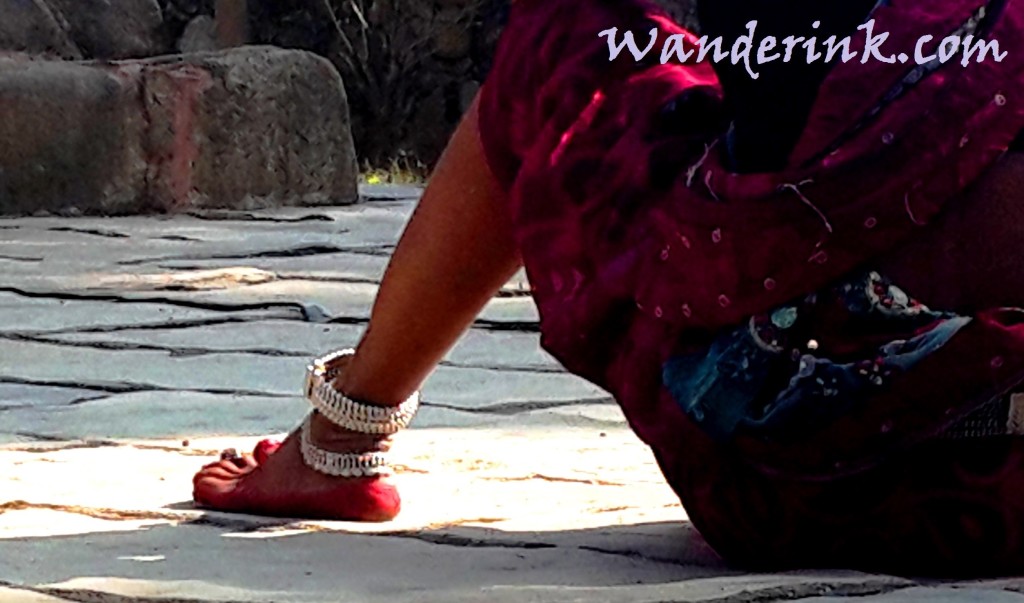
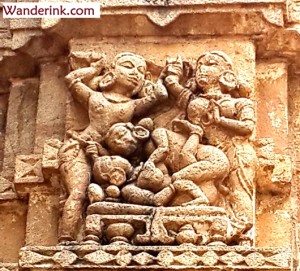
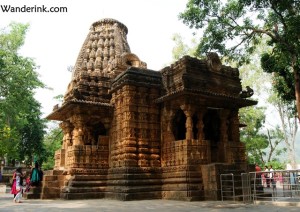
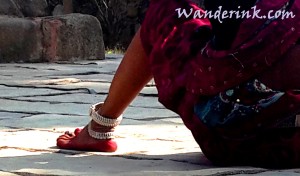
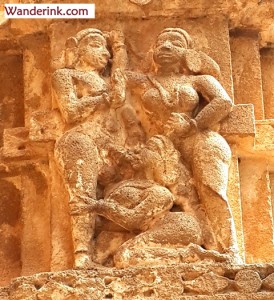

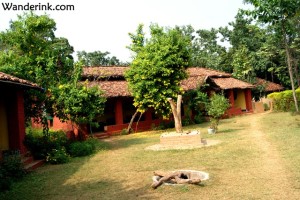









Wow! What an experience. I love the idea of staying here and spending hours looking at the architecture.
Oh yes, you should. This is the best…living temple. The Shiva Temple of Pali is a close second.
Superb! Looks like you managed to see a lot more of chhatisgarh than we did. Wish I had visited this temple too.
Well, I was actually road tripping around Chhattisgarh for a month before the Sirpur festival. Yes, you should visit Bhoramdeo. Its fab!
Bhoramdeo is by far the most remarkable site in Chhattisgarh, were you to ask me. Pity it doesn’t find the attention it justly deserves. Thank you for translating its unsung beauty into words.